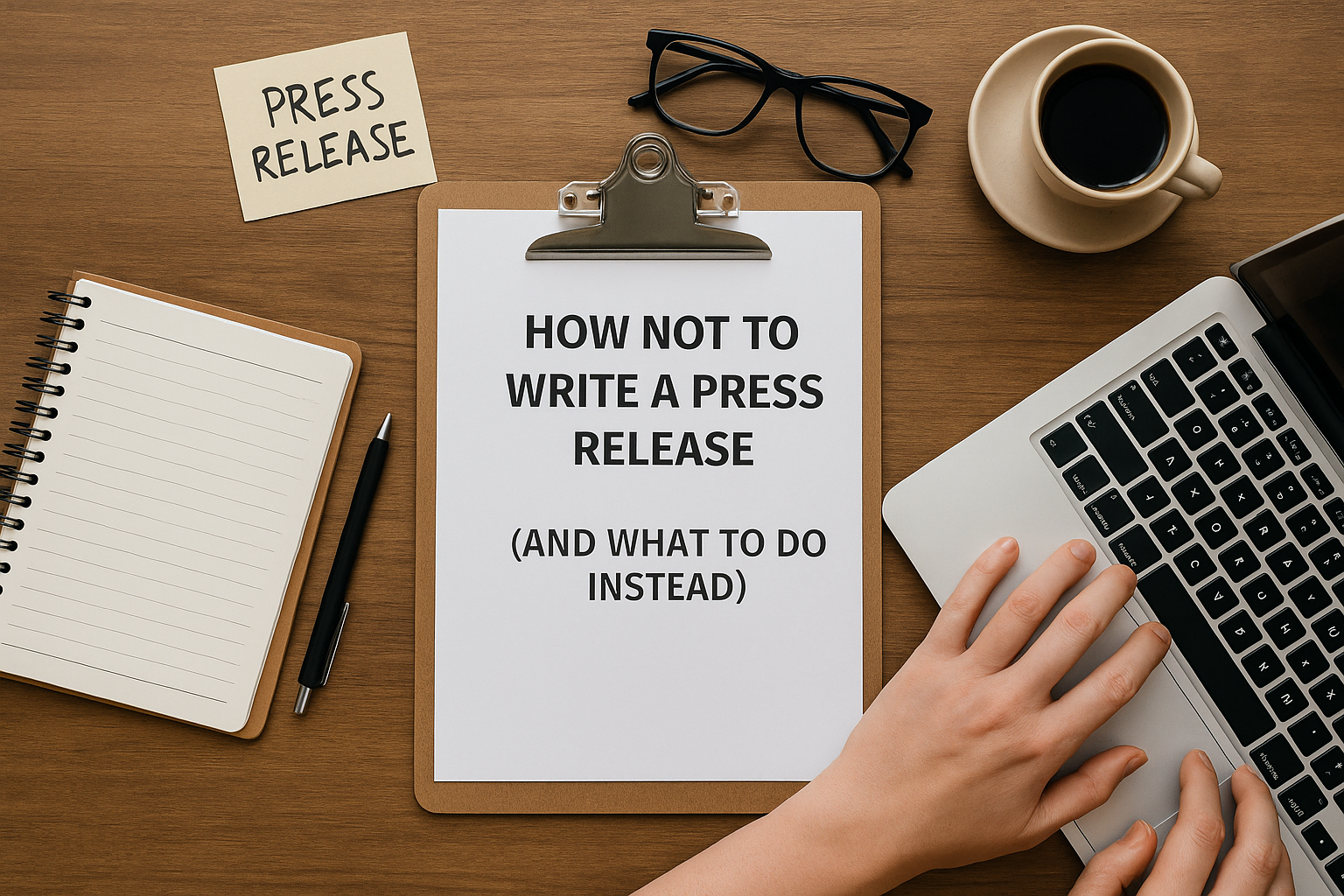Table of Contents
- What a Press Release Is (And Isn’t)
- How NOT to Write One
- How to Write a Good Press Release
- Quick Checklist
- Final Thought
📰 What a Press Release Is (And Isn’t)
A press release is a short, formal announcement sent to media outlets or blogs to let them know something newsworthy is happening. It’s not a personal blog post. It’s not a sales pitch. And it’s not a diary entry.
Press releases are for:
- Announcing a new exhibition, collection, or event
- Sharing a significant achievement (like an award or major feature)
- Launching a creative product or brand collaboration
- Inviting the press or public to attend something
They are not for simply saying “I made a new thing, and I hope people like it.” That’s what social media is for. Press releases need a hook.
🚫 How NOT to Write One
Sadly, many creatives end up writing press releases that fall flat because they:
- Start with “I’m really excited to share…”
- Write in the first person (“I” or “me”)
- Include vague or emotional language
- Forget to answer the basics: Who, What, When, Where, Why
- Send walls of unformatted text with no contact details
- Don’t actually say what the press is supposed to do with the info
Here’s a classic example of how not to start a press release:
“I’ve always loved painting foxes, and after a year of soul-searching and experimenting with new materials, I’ve finally found my voice. My new series explores inner stillness through the eyes of forest animals. I hope you’ll come and see it.”
Lovely sentiment. But a journalist will shrug and hit delete.
✅ How to Write a Good Press Release
Press releases are written in the third person and follow a specific structure:
1. Headline
Short, clear, and factual. E.g.:
“Local Artist Launches New Wildlife-Inspired Exhibition in Manchester”
2. Subheading (optional)
A single line that adds context:
“Abbie Shores’ new watercolour collection opens at the Green Leaf Gallery this September.”
3. First Paragraph = The News
This is where you summarise the most important facts:
- Who – your name
- What – the event, launch, or release
- When – date/time
- Where – venue or website
- Why – why it matters
4. Second Paragraph = Supporting Info
Include more detail about the artist, the inspiration, and what the audience can expect. This can be more creative, but still professional.
5. Third Paragraph = Quote
Add a quote from you or the gallery owner. Make it natural:
“This series came to life during long walks through Yorkshire’s woodlands. I wanted to capture the quiet companionship of wild creatures.” — Abbie Shores
6. Closing Paragraph = The Ask
What do you want them to do?
- Cover the event?
- Attend the launch?
- Interview you?
Include links and contact info:
Press contact: Your Name – youremail@example.com – 07777 123456
🧾 Quick Checklist
- ✔ Is it in the third person?
- ✔ Is the headline specific and factual?
- ✔ Does the first paragraph answer the 5Ws?
- ✔ Is there a clear quote?
- ✔ Have you included contact details and links?
🎯 Final Thought
Press releases are like polite door-knocks to the media. You’re not screaming for attention, you’re offering a story they might like to tell.
Write it like a journalist, not an artist. Keep it factual, respectful, and clear. And remember: the goal is coverage, not compliments.
Bonus tip? Send a great image with it. Editors love having visuals ready to go.
[aom_get_involved]
